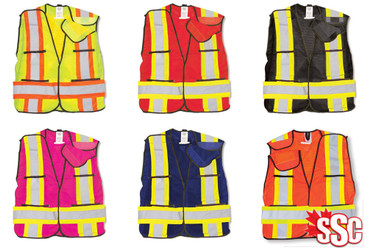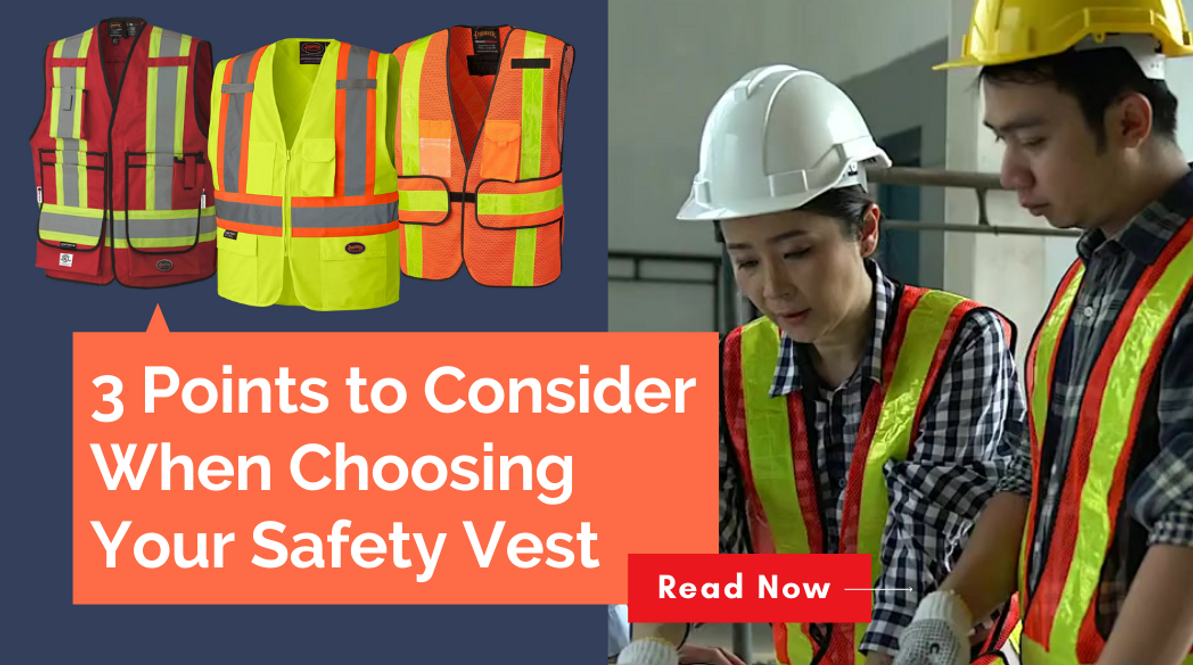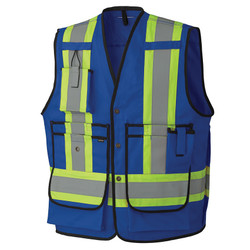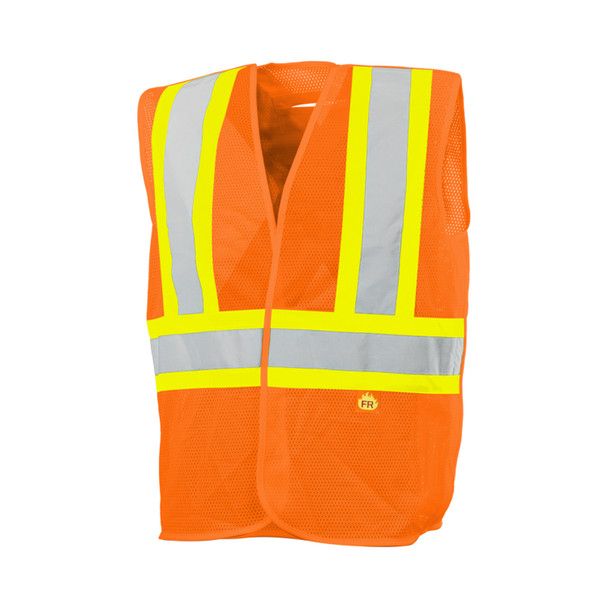3 Points to Consider When Choosing Your Safety Vest
Since their inception in the early 1930’s, the concept of the “Safety Vest” has come a long way! When it comes to basic PPE, a safety vest is an easy solution to help increase workers’ visibility, and to help alert others of their presence.

Just as there are a variety of potential hazards in the workplace, there are as many kinds of safety vests available on the market. Choosing the right one is imperative.
To help you navigate the wide world of safety vests, we would like to outline 3 factors to consider the next time you need this piece of PPE.
- Safety Level and Class
First and foremost, whenever a safety garment is being purchased, it’s important to consider the potential hazards being faced by the employee, as well as the regulations in place for the type of work being done.
CSA lists three classes of garments based on body coverage provided.
- Class 1 provides the lowest recognized coverage and visibility. These can include elastic sashes or safety bands that can be worn over clothing to add some visibility to the worker. Typically this type of safety vest is reserved for low risk work sites.
- Class 2 provides moderate body coverage and superior visibility to class 1. Typically these vests are worn in medium risk environments. These are for employees near faster moving vehicles or machinery, as well as those that may work in lower light conditions.
- C. Class 3 vests provide the highest level of protection for workers in high risk low visibility environments. In many cases, these vests have sleeves. Also, they typically have both a bright colored background material as well as retro reflective striping.
2. Type and Color of Material
Once the right level of protection has been considered in terms of retroreflectivity, other factors come into play when choosing the right vest.
Questions to consider include:
If you work in an environment where the risk of electrical sparks is elevated, then you may want to add an FR rated vest to your uniform. Although the safety vest alone will not provide adequate protection, a complete set of Arc Rated PPE is required for work conditions where electrical hazards are a threat. See our FR rated vests here.
2. What temperature do I work in? Do I need an insulated vest or a lighter material vest? Do I need material that is either waterproof or water resistant?
Depending on the environment, you may need a lined vest, or in the case of extreme heat, a mesh vest to allow for better breathability. In addition to these features, workers can opt for a vest that is both waterproof and breathable (vapor permeability). See our options here.
3. Do I work in dark conditions? Open space? Should I choose yellow or orange?
Orange-colored vests work well in wide-open areas, particularly in the daytime. Yellow-colored vests are typically used in lower light conditions as it is more noticeable from a distance.
And Finally,
3. Vest Components/features
Once you’ve narrowed down the playing field, the only thing left to decide is the style of vest you need.
Choosing the option that offers the highest level of safety is, of course, the main priority. However, there is also something to be said about comfort and convenience. Offering employees a vest that suits their needs will go a long way in ensuring that they wear their PPE on a daily basis.
- Closure
Choices include the types of closures such as snaps, zipper or velcro. Think about how long you are wearing the vest, as well as how quickly or easily it would need to come off should an incident occur.
A great example is the 5 pt Hook and Loop Break-Away Vest. For this type of vest, the hook and loop strips are strategically placed on the sides and shoulders, allowing for quick removal. This feature allows the vest to break off the worker rather than pull them into machinery, should a section get caught.
2. Pockets and Mic Tabs
Certain trades may require vests with specialized pockets to hold specific items or transparent pockets to display identification or credentials. Pockets also come with several features, such as dual pockets for separating items or grommet holes to dispense flagging tape. Another feature that may be important to certain workers is the front or shoulder strap to clip radios or shoulder mics.
3. Harness compatibility
Nothing should be worn over a safety vest, including a fall protection harness. A safety vest that is compatible with fall protection features a cut-out on the back to allow an unobstructed D ring, and cut outs in the front for straps to pass through. See our options here.
Simply stated, a safety vest is an inexpensive, lightweight, comfortable, and adaptable piece of clothing that has the potential to save lives. Contact our customer service team if you have any additional questions or concerns about purchasing your next safety vest!
Recent Posts
-
3 Key points to consider when shopping for Hi-Vis Rain Gear
As the warmer months of spring and summer roll in, many outdoor workers breathe a sigh of relief at …7th May 2024 -
Are You Prepared for the Wilderness?
While encountering a bear in the wild can be an unforgettable experience, it can also be dangerous. …10th Apr 2024 -
3 Points to Consider When Choosing Your Safety Vest
Since their inception in the early 1930’s, the concept of the “Safety Vest” has come a lon …7th Mar 2024






